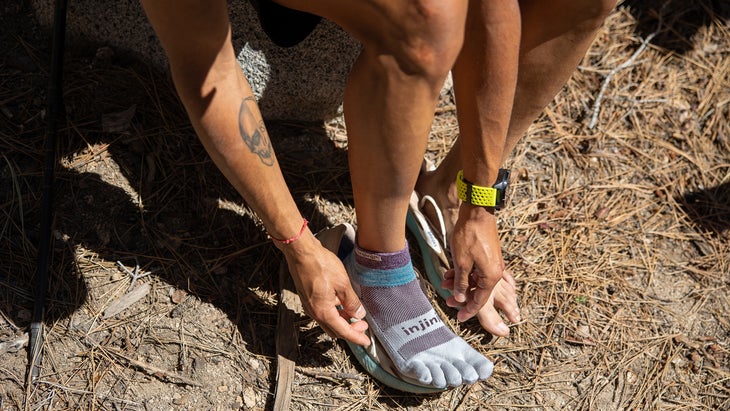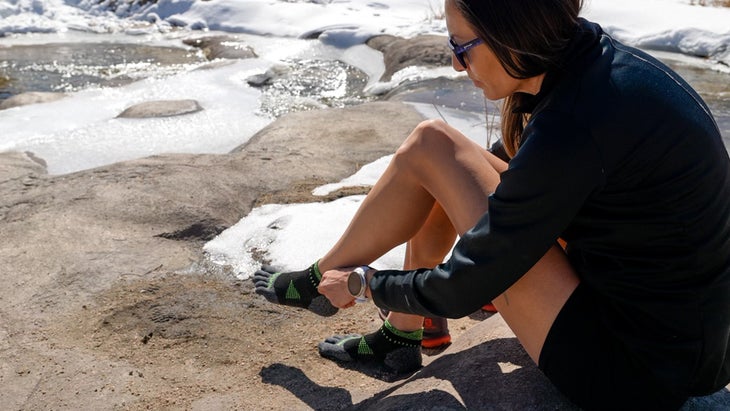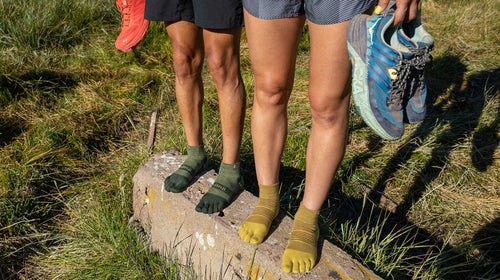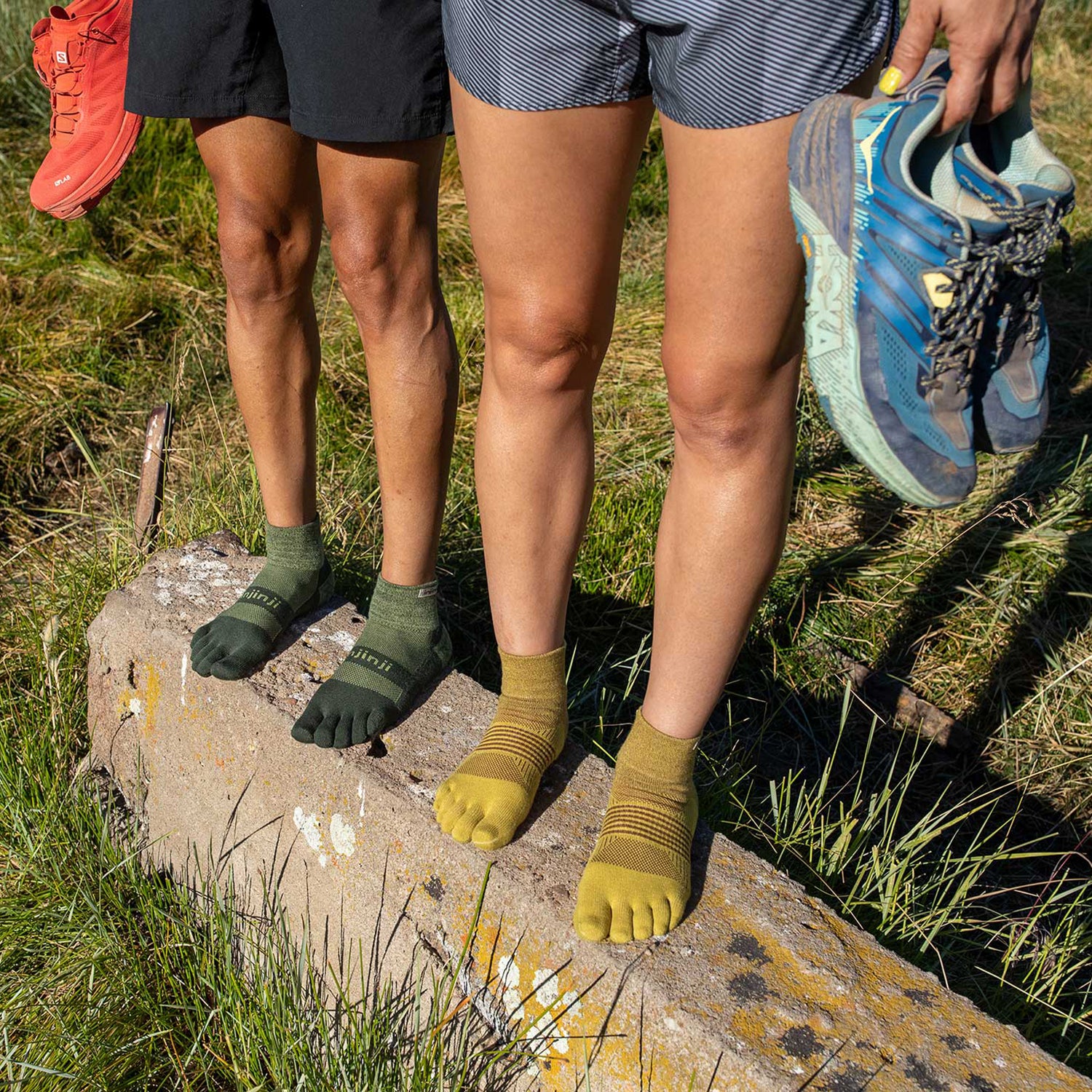For the better part of two years, after I finished hiking the Appalachian Trail and tried (and repeatedly failed) to return to running, the lower half of my right leg became a medical battlefield. I went to physical therapists and massage therapists, general practitioners and osteopaths, surgeons and shrinks, asking them all why I was in so much pain. With me as a proxy, this slew of professionals fought over exactly why the inside of my shin and ankle felt like a tender tree branch about to snap in a strong wind.��
Some jabbed me with dry needles or jerked at my joints. Others��authorized X-rays or ordered elaborate shoe inserts. Still others dug into trigger points with their fingers or ground��soft tissue with what looked like . From time to time, my terrible pain—imagine being stabbed with a pencil in the meat just between your shin and calf until the feeling radiates downward, across the ankle, and beneath the big toe—would relent. But no matter what shoes I wore, exercises I repeated, or treatments I received, any inexplicable sweet relief would soon fade.
That is, at least, until I met Joe Quinlan. A 30-year-old runner and certified pedorthist in Asheville, North Carolina, with no medical degree (but a high degree of patience for others’ complaints), he sat on the floor of his shoe store, , and cradled my leg. How many weeks, he wondered, did I have until I started the Pacific Crest Trail?��When I said six, he sighed softly, then calmly replied, “I think we can fix this—or we can start, at least.”��
Quinlan told me I had two problems. First, I had , meaning my second, third, and fourth digits were starting to curl into the shape of a claw, limiting my balance and power. Second, my large toe was starting to curve inward toward its neighbors due to a bunion, a common condition called . This further threatened my power and stability and contributed to the pain that rippled up the tendon parallel to my shin.
The fix, Quinlan said, would take little more than persistence and some fairly inexpensive new gear. For years, runners and hikers have been transitioning to shoes with wide, or “natural,” toe boxes, like Altras, Topos, or Xeros. More room in this part of the shoe��allows the foot to spread out, so toes aren’t bound together. Quinlan handed me a pair of , then a set of : silicone spacers he said would gradually correct��37 years of accumulated toe deformities. I would need to wear the latter��a little every day—just an hour initially, progressing gradually until I could comfortably sport them all the time, including during exercise.
Finally, he passed me a pair of tall yellow and blue toe socks, much like the goofy ones from the 1990s. “They’re going to tickle a little at first,” Quinlan warned me with a grin. “But wear them every day, and you’ll get better.”��
I laughed the first time I put them on—indeed, they tickled. But after wearing the shoes, socks, and spacers daily for a year during two thru-hikes and many long runs, Quinlan was right: I do feel better.
My shoe-store guru, however, didn’t warn me that I had effectively entered another medical battlefield. Are toe socks—and the whole toe-spacing industry, really—just snake oil, or could they be an endurance athlete’s salvation? I myself was becoming a convert to toe socks and toe spreaders, offering up my anecdotal evidence to anyone who would listen. But, it turns out, the research may not be quite so clear.
Dr. Ray McLanahan was just four years into his career as a when he realized that, someday soon, he might require the same sort of toe-straightening surgery he was performing ten times each week. A longtime runner, he too was starting to suffer from hammertoes and bunions. In 1999, McLanahan read an editorial by fellow podiatrist William Rossi titled “” which inspired him to search for solutions.��
“I realized that we start deforming our feet early in life, and it has nothing to do with function or physiology. It has everything to do with fashion,” McLanahan says. “And I’m not opposed to fashion, but I am opposed to building fashion into athletic footwear.”
He began experimenting with his own footwear, by hiking in Birkenstocks and running in Crocs, shoes that allowed his toes to splay in their natural shape—“not like a diamond but like a trapezoid, widest at the tips of the toes.” (Notably, he set his personal marathon record in a pair of Crocs and says his feet didn’t even hurt��the next day.) Positioned��that way, McLanahan says, the foot makes better contact with the ground, improving balance, stability, proprioception, and power.��
“If feet are allowed to do what feet are good at doing, the rest of the body takes a huge rest,” he says. “Joints aren’t doing things they aren’t supposed to do when the feet are healthy and strong.”
McLanahan didn’t stop at shoes; instead, he wanted to correct the damage he’d already done to his own toes by straightening them without surgery. He began buying individual toe-spacing pads from pharmacies and adhering them to the skin between his toes. The hammers slowly unfurled, and his pain steadily diminished. It worked.
Brainstorming with a friend around 2004, McLanahan developed Correct Toes, a curved silicone��insert with three holes that slip over the middle digits and push them apart. The $65 invention, along with shoes with wide toe boxes (which barely existed when he started running in Crocs), slowly grew into a principal component of his podiatry practice as he tried to restore what he saw as his patients’ natural foot shapes.��In the past several years, his sales have increased tenfold.

McLanahan sees toe socks as an integral part of that mission, too: not only can Correct Toes be worn on top of them, but he says there’s little point in wearing a shoe with a wide toe box if the socks won’t allow the toes to stretch out. Conventional socks with a single seam at the front can bind the front of your foot, much like a pair of pointy-toed shoes. Everyone—not just endurance athletes—should be wearing toe socks, McLanahan says, or at the very least stretching the seams of their conventional socks when they emerge from the dryer.
“The circulation that goes into the tips of the toes branches at the ball of the foot. That is where toes get pinched together by socks,” McLanahan says, citing some of the he uses to pitch Correct Toes. “You can’t control your arch if you don’t know what your toes are supposed to do or if your big toe isn’t in alignment. If our toes are spread out, we don’t even overpronate.”
His eventual goal is to put podiatrists—himself included—out of business, or at least get them out of the operating room by fixing foot and toe problems before they require surgery. Shoes, spacers, socks: together, they have that power, McLanahan insists. “We’re starting the deformation process with our kids at age two in America—pointed shoes, constricted socks, shoes with high heels or toe springs,” he says. “They all cause deformities, but we all do it.”
This stance makes McLanahan divisive in the footwear world. For some, he’s a hero—when I told Quinlan during a subsequent visit that I was going to interview McLanahan, he beamed as if I were going to meet a rock star. Scott Socha, a pedorthist who owns the North Carolina store where Quinlan works, first tried Correct Toes on a client whose second toe had been amputated; after that experience, he began to believe so strongly in the power of well-spaced toes that Foot RX dropped almost every line of conventional socks.��
But what I couldn’t reconcile was the toe-spread fever that Quinlan, Socha, and McLanahan share, given how little other hikers or runners seem to talk about it—if it’s so good, why isn’t everybody already doing it? When I mentioned my skepticism, though, McLanahan instantly offered up a list of doctors he says want him sued or barred from practicing medicine; he believes they feel their livelihoods are threatened by his approach. When I called Dr. Kevin Kirby, a veteran podiatrist in Sacramento, California, that McLanahan sees as his most ardent opponent, I expected an all-out condemnation, but that moment never came.��
“Some people think he’s a crackpot,” Kirby says, laughing. “He’s not a bad guy, but I have a high degree of skepticism for anyone who has a product they want to sell. That doesn’t mean it can’t work for some ���DZ����.”
Indeed, when Kirby sees patients suffering from the early stages of hammertoes or bunions, he often recommends shoes with wider toe boxes and even Correct Toes, though he doesn’t sell them in his office. Toe socks can be part of a conservative approach to fixing those problems, too, he told me, though they’re not necessarily essential.
What’s more, Kirby doesn’t see that combination as a panacea for everyone’s biomechanical issues, a case he believes McLanahan has repeatedly overstated. He agrees that modern running shoes and perhaps even our socks modify foot shape, but he says there’s little research to suggest that’s actually bad, or that the natural foot shape is stronger or better. He points��to the Vibram FiveFingers craze ten years ago—a trend that largely subsided following involving unsubstantiated claims about the foot-strength and health benefits of its shoes.��
Again, Kirby says the salesmanship outstrips the science here. “If someone made a complaint against Dr. McLanahan, he would lose in court,” Kirby says flatly. “You can make all the claims you want about how Correct Toes cures bunions and hammertoes, but where’s your evidence? Maybe it does help some people, but you can’t make outlandish health claims to sell a product.”
When I tell Kirby I’m actually wearing toe socks, Correct Toes, and shoes that allow my toes to fan out, and that my pain has changed dramatically since I started the regime, he doesn’t protest or balk. He’s glad to know it works for me, but he wants to see more research conducted on how it may work for others.��
“There are no drawbacks to doing that—one out of ten runners I see now are wearing toe socks, and I’m not telling them not to do that,” he says. “But there’s no way it’s going to do that for all ���DZ����.”
For me, there was at least one drawback with toe socks, especially at first: they made me feel like an adult child. Friends loved to laugh at my individually squiggling toes, asking if I’d gotten my colorful at a Journeys or a Hot Topic store, circa 1996.��
But on the Pacific Crest Trail, I soon noticed I had joined a growing contingent of toe-sock enthusiasts, each betrayed by the distinctive Injinji label visible on the tops of their socks. The socks became popular, I learned, not for toe spacing per se but instead for blister prevention—when your sweaty toes aren’t rubbing together all day, there’s less friction for creating hot spots, the bane of thru-hiking feet.
“Our hiking sales are increasing,” confirms Injinji’s director of e-commerce and operations, Claire Kooperman. “People are doing more research on how to keep their feet comfortable on the trail—how do I help my feet, especially with blisters?”
After a few thousand miles, though, I learned that Injinjis rubbed the wrong way, at least for my feet. Holes formed after just four or five days where the base of my toes met the ball of my foot, which led to blisters, regardless. On the PCT, I burned through two-dozen pairs, a financial burden since Injinji doesn’t match the lifetime guarantee of, say, Darn Tough. Kooperman acknowledges that durability remains a point of continual concern and improvement.

For now, I’ve found my fix with , a Maryland company with an extensive product line and a pair of patents for innovative yarns and manufacturing processes. Founded by Rick Rudinger, a former Army infantry officer who now talks about textiles with near tactical specificity, Xoskin makes thin toe socks that squeeze the foot gently.��They hold together well too, the result of a laborious and time-consuming knitting approach and proprietary blends of yarn, says Rudinger.
As he tells me about the copper yarn in his socks, I nod along and listen about yarn deniers (that is, the density) and specialized knitting machines and hand looping—I’m now familiar with the nuances of toe socks and textiles.
I don’t know if McLanahan’s Correct Toes will forever prevent my overpronation or injury. And I don’t know if Kirby will ever get his research.��But I do know that, currently, my toes, feet, and lower legs feel much better, despite all of the miles I’ve logged since Quinlan first helped me a year ago. Sure, my right leg aches sometimes, but I’m in much less pain than I once was. So I’ll continue wearing the shoes, the spacers, and Xoskin socks, at least until my toes point straight up the trail—or until, I suppose, research says it actually doesn’t matter.


